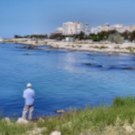Thai A380 To Serve Hong Kong
-
Recently Browsing 0 members
- No registered users viewing this page.
-
Topics
-
-
Popular Contributors
-
-
Latest posts...
-
9
Mobile banking app
I guess the problem with me is I originally set up a/c on a phone registered to me. But it expired. I now just use a pay and go for the last 1.5yr and no problems at all, the app still worked fine -
60
Military Royal Thai Air Force Unveils Locally-Made Kamikaze Drone
Maybe, ya know, arms are for hugging. Why the expensive BS to kill people? -
106
US CDC report shows no link between thimerosal-containing vaccines and autism
As long as AN member continue to post untruths, links to fraudulent papers and utter nonsense. I'll respond. -
138
What sort of personality traits do you need to marry a bargirl?
This reminds me of the story of the curate's egg, The curate is dining with the bishop, his superior, who declares that he has a bad egg. The humble curate, wishing to be polite, rejects a replacement, assuring the bishop that ‘parts of it are excellent’. The joke of course being that if parts of an egg are bad, the whole thing is bad. -
188
Economy Trump Dishes Out 36% Tariffs in Shock Move Against Thailand
Cultism, blind faith, greed, ignorance....all those components and more. -
17
-
-
Popular in The Pub









.thumb.jpeg.d2d19a66404642fd9ff62d6262fd153e.jpeg)





Recommended Posts
Create an account or sign in to comment
You need to be a member in order to leave a comment
Create an account
Sign up for a new account in our community. It's easy!
Register a new accountSign in
Already have an account? Sign in here.
Sign In Now